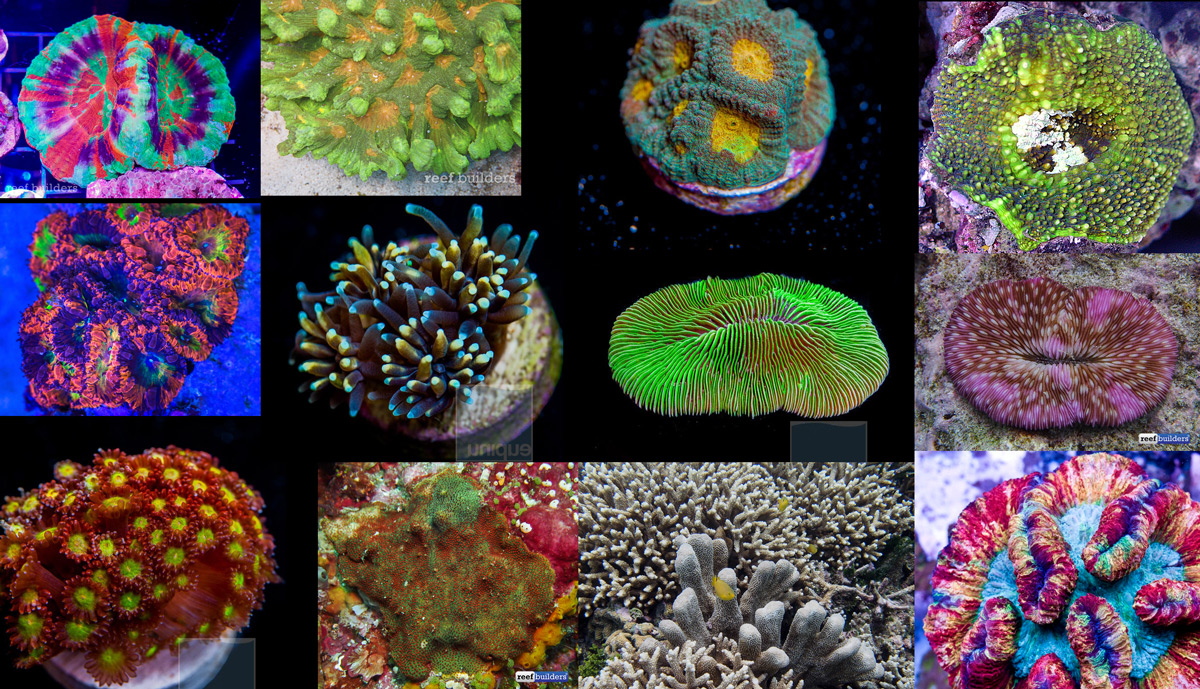The notion of discussing stony coral (Scleractinian) taxonomy is probably one that will elicit the blankest of stares. However, if you are hyper passionate about corals, their evolution and especially their relatedness gives us reefers insight to the care requirements, and the basic function of these corals in the natural habitat.
Several months ago we discussed the Tree of Life and how the changes to coral taxonomy were coming down the pike, and now the Scleractinian Systematics Working Group has released a paper outlining a number of these changes. The SSWG is a large consortium of various coral researchers and taxonomists who used a variety of interdisciplinary science analysis techniques to evaluate the whole stony coral tree of life.
The paper itself reads like a boring list of latin names but we’ve done the heavy lifting for you and sorted through all the changes which are featured and highlighted below.

A number of broadly called ‘disc corals’ belonging to the family Fungiidae and the genus Fungia have now been split off into their own respective genera. One notable new monospecific genus is Lobactis, which contains the recognizable coral formerly known as Fungia scutaria.

The other big split off from Fungia are the elongated disc corals which are now in the genus Pleuractis. These include Pleuractis paumotensis and five other species, P. gravis, P. granulosa, P. moluccesnsis, P. seychellensis and P. taiwanensis.

Coral reefers have long known that the short polyped flowerpot coral formerly known as Goniopora stutchburyi is not like its congeners. This species retains relatively short polyps, and it can be found in extremely bright colors with various colors of red. Now the short polyped flowerpot is recognized by taxonomists as being distinct with the erection of its own genus, Bernardpora.

On the flipside of the flowerpot coral coin, the genus Alveopora is no longer ever closely related to the traditional flowerpot corals at all!! The genus Alveopora still retains its species but the whole group is now believed to be closely related to other genera in Acropora and its similarity with “pure” flowerpot corals is a case of convergent evolution. In a way, it’s easy to imagine some species of Astreopora with elongated polyp stalks looking very much like Alveopora species, especially A. minuta.

Isopora is now a fully distinct genus from Acropora. Taxonomists have been flirting with the notion of the Isopora genus for decades now, first as a subgenus, but while some researchers have been referring to Isopora at the generic level, this new review fully justifies that Isopora is indeed a distinct group of corals from Acropora.

Galaxea is now in the coral family Euphyliidae, making it more closely related to the hammers and the torch corals that we are all familiar with. While taxonomists may have looked at skeletal and genetic similarities, anyone who’s seen the sweeper tentacles from both Euphyllia and Galaxea will see the family resemblance.

The Favia and Montastrea genera are now reserved solely for Caribbean coral species. The new genus name for Indo-Pacific Favia is Dipsastraea and for Montastrea it is Phypsastraea. Coral reefers who have already learned the names and differences between Favia & Montastrea will probably be hard pressed to adopt the new names.


After much back and forth, it seems that Wellsophyllia radiata is now formally recognized as a distinct genus and species again. The tissues of both Trachyphyllia and Wellsophylliai are very similar, but they can be distingushed based on their shape and skeletal features.

The two chalice coral genera, Pectinia & Mycedium are now in Merulinidae, and separate from Echinophyllia & Oxypora. There is a clear similarity with the growth and behavior of Pectinia & Mycedium but with this new taxonomic placement, we can really separate the care and aquarium requirements of these and the other chalice corals.


Homophyllia (Scolymia) australis: So longbleeding appled, warpaint, master and UFO Scolymia australis. You may now be called Homophyllia australis but to us your very best will still be known as ‘Master Scolies’.

Parascolymia vitiensis was reclassified from the Scolymia, and recent examination has proposed to place Australomussa in the Parascolymia genus as well. The thin tissue of ‘vitiensis’ and Australomussa is common for both tissues, and we can imagine that they have similar evolutionary histories.

Stylocoeniella is a genus of cryptic and encrusting stony coral that is now beginning to gain some popularity in the aquarium hobby.The genus is now in in the family Pocilloporidae making it closely related to birdnest coral, Seriatopora, Stylophora and Pocillopora. We have observed polyp bail-out in Stylocoeniella before so we believe that this new taxonomic placement is probably a very good one.

Blastomussa is now in an uncertain limbo called incertae sedis which means that it is currently unknown where and which corals it is related to. Since the description of Blastomussa vivida we are partial to the theory that Blastomussa are more closely related to the bubble corals of Plerogyra, Physogyra and Nemenzophyllia.

The genus Scolymia is now reserved exclusively for the Caribbean Scolymia lacera

The Caribbean small polyped “Montastrea” are now in their own new genus called Orbicella.


The genus Montastrea is now reserved exclusively for Caribbean Montastrea cavernosa

The genus Favia is now reserved exclusively for Caribbean Favia fragum



